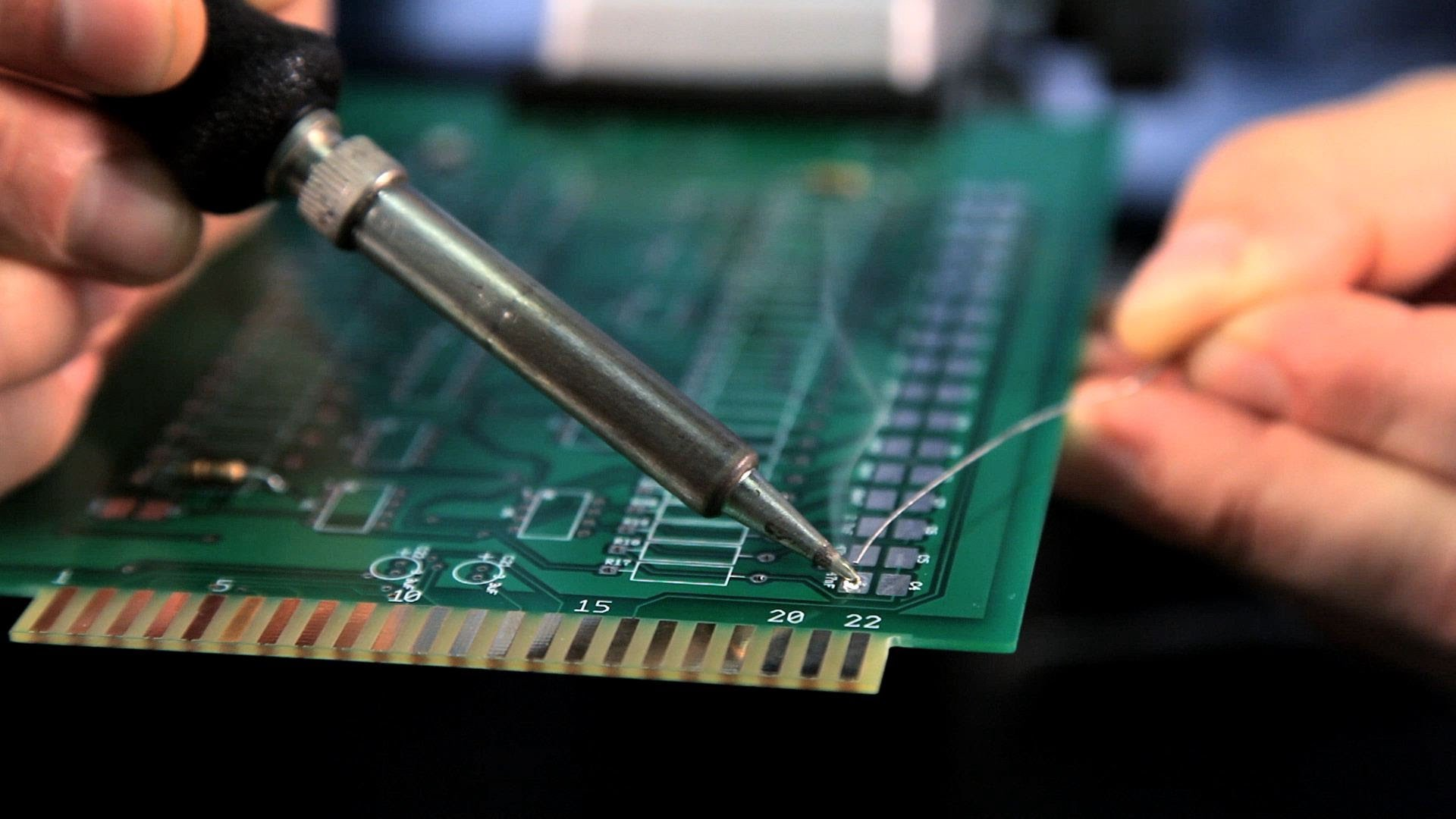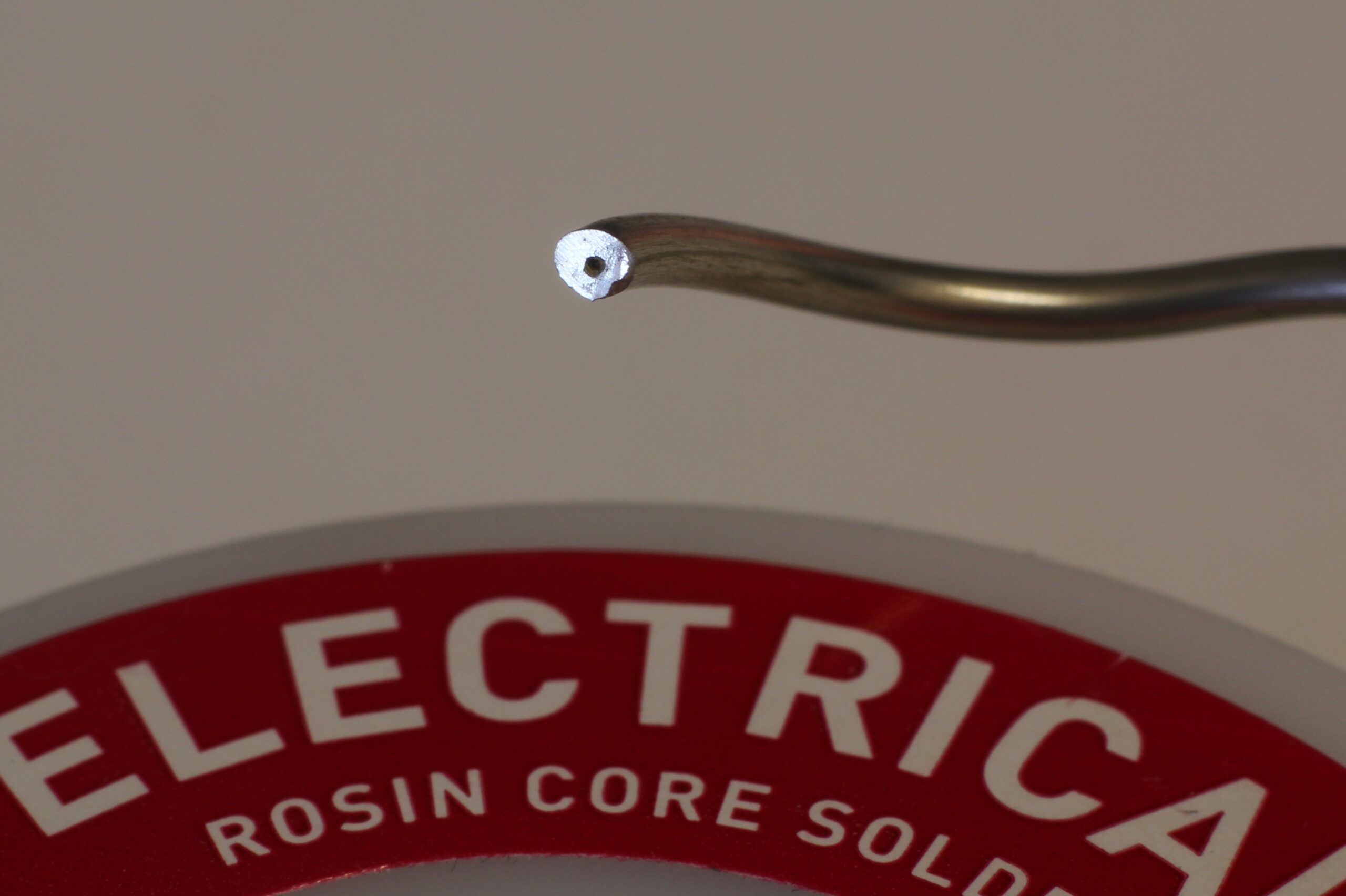Lead Free Rosin Core Solder: 4 Tips to Help You Choose the Right Solder.
Solders come in a variety of compositions and flux cores. However, lead free rosin core solder is often the preferred choice of most commercial electronics manufacturers because they are considered safe under RoHS and contain a mild rosin-based flux.
The choice of solder immensely influences the soldering process. But many people don’t give the selection phase of solders the importance they deserve. And end up using the wrong solder, say an acid core solder instead of a lead free rosin core solder, which has the potential of ruining the entire electronic soldering process.
Therefore, we decided to shape this article in the form of a selection guide. In this article, we will begin by explaining the classifications of solders based on their alloy type and flux core. Then we will share some handy tips to help you choose the best solder for your project.

Solders and Their Classifications
If you are here looking for the best solders for your soldering project, you probably already know what a solder is. But in case you don’t; solders are low melting metal alloys that are used to create conductive metallic joints in electronics equipment.
Solders come in a variety of shapes and sizes. You may choose from pellets, bars, paste, and wire. However, if you are soldering manually with a soldering iron, you may want to buy a lead free rosin core solder wire. Why? We’ll get to that in a bit.
Solders are mainly classified on the basis of their compositional elements. And are categorized into two types: Lead-based solders and lead-free solders.
What sets lead-based and lead-free solders apart is composition and the melting point. Lead solders consist of tin and lead. On the other hand, lead-free solders contain tin with other elements like copper, silver, etc.
Compared to lead-free solders, lead solders liquefy at a lower temperature as and hence are often considered easier to use.
What is a Flux Core?
At the beginning of this article, we said that solders are classified based on their composition and flux core. In the previous section, you saw how the composition of elements divides solders into two types. Now, let us talk a bit about flux cores.
Solder wires are tubes with a very fine hollow interior. This hollow interior is called the core and is filled with flux. Therefore the solder is called a flux core solder.
Flux is a solution that improves the electrical conductivity of the soldering joint and imparts mechanical strength to the joint. Moreover, flux enhances the wettability of the solder metal so that it flows and adheres properly. Additionally, flux also offers air locking which prevents the passage of air and saves the joint from corrosion due to oxidation.
Types of Flux Cores
There are two main types of flux cores, the rosin core, and the acid core. We will discuss these flux cores in more detail below.
Rosin Core Solder
Rosin is a sticky, gel-like substance that comes from resins present inside conifers. The Rosin core solders carry a rosin-based flux. The rosin-based fluxes are mild, as compared to acid-based flux.
Metals are prone to oxidation at elevated temperatures. Rosin flux present inside the core of the solder melts before the alloy melts and prevents the oxidation of metals and protects them from corrosion.
Because rosin-based flux is less aggressive, cleaning and removal of leftover flux are not necessary after soldering with lead free rosin core solder. This feature makes them the preferred choice for electronic soldering because cleaning leftover flux is often difficult post electronic soldering.
Acid Core Solder
As its name suggests, acid core solder contains an acid-based flux inside its core. The acid-based flux is an aggressive cleaning agent and therefore, acid-based solders are used for soldering steels and other such metals.
Soldering with an acid-based solder necessitates a thorough cleaning process after soldering is complete. Because any leftover flux can lead to corrosion of the soldered equipment.
Acid core solders are most commonly used in plumbing applications.
Solid Core Solders
While solid core solders do not classify as flux cores but they are still worth mentioning. Solid core solders do not contain flux inside their core. These are solder ‘wires’ in its truest sense. Because they do not contain flux, so, while using solid core solders, you need to apply flux yourself.
Choosing the Right Solder for Electronic Soldering
The great number of choices available in solders can be overwhelming for people new to dealing with the soldering process. Combine the overwhelmingly large number of choices with the grave consequence of choosing the wrong solder, and the situation becomes even more daunting.
But the process of solder selection can become easy if you approach it methodically. Read on to find out how to do that.
1. Picking a Solder Core
Picking a solder core is imperative because an aggressive flux can accelerate the corrosion of the solder joint.
As we have discussed above, rosin core solders are best for electronic soldering because they are non-aggressive, unlike acid based solders.
You can also use a solid core solder for electronic soldering, but then to ensure that your solid core solder joints stay safe from oxidation and are strong enough, you will have to apply the rosin-based or water-soluble flux yourself.
2. Lead or Lead-Free Solder?
As we discussed above, solderers classify solders into two categories: the lead solders and the lead-free solders. Both of these solders have their pros and cons.
If you perform electronic soldering as a hobby or are in the process of learning, you might want to go with a lead-based rosin core solder because it is easier to use. However, you will have to practice extreme caution while using lead solders because of the grave effects that lead has on human health.
However, it is always smart to avoid anything that has the potential of harming the health of you or people around you. Therefore, lead free rosin core solder may be the right choice for your electronic soldering projects because it will help you avoid the health-related consequences of lead.
All you’ll need is a little soldering experience and a better soldering iron. And you will be able to solder with lead-free solders as good as you do with lead solders.
Moreover, if you manufacture consumer electronics, then you have no choice but to use lead free rosin core solder because of the EU WEEE and RoHS restrictions on using lead in electronic goods.
3. Composition of Solder
The composition of the solder is another important decision that you will have to make depending upon the type of solder that you choose.
Lead solders offer two common compositions, the Sn60Pb40 which has 60% tin and 40% lead, and the Sn63Pb37 that has 63% tin and 37% lead.
Sn63Pb37 is a eutectic solder, which means it can change from solid to liquid instantly when heated. Hence, if you want to finish the job quickly and you prefer using a lead-based solders, you might want to consider using Sn63Pb37.
Lead free rosin core solder also offers a variety in composition. The most common lead free rosin core solder composition is 99.3% tin and 0.7% copper and the Tin-Silver-Copper solder that contains around 95% tin, 3-4% silver, and 0.5-0.7% copper.
There are other lead free rosin core solders as well that contain tin along with other small compositions of other components like antimony, bismuth, nickel, germanium, and zinc.
4. The diameter of the Wire
Solder wires come in a variety of diameters. You can get a 0.062 inches wire, a 0.032 inches wire, and 0.02 inches wire among other diameters. For most electronic soldering, as a general rule, a 0.02-0.04 inch diameter wire is good enough.
Choosing the right diameter of your lead free rosin core solder (assuming you have chosen it because it is the best choice) is imperative because diameter may influence the quality of the solder joint and lead time of the process.
Larger diameters may take longer to melt and may as well lead to the formation of solder bridges. So pick larger diameters only when soldering bigger components like connectors.
On the other hand, if you go with a thinner wire for a soldering job that required a large diameter wire, you will have to perform additional soldering which will prolong the process and increase the risk of heat damage to the nearby components.
So, go for a thin lead free rosin core solder wire when sticking tiny components like surface-mounted components.
Most expert solderers recommend using a 0.02-inch wire for SMTs and a 0.03-inch wire for leaded parts and connectors.
Conclusion
Choosing the right solder is critical to the success of the soldering process. The selection of the right solder may seem a little overwhelming, given the sheer volume of choices they offer. However, they can become easy if you approach them methodically.
Many people start by opting for lead-based solders because they are easier to use. But lead-free rosin core solder is a better choice for electronic soldering. Because it has no health-related consequences and the rosin core (when left on the board) does not corrode the solder joints.
For More Information, Contact Us Today!





